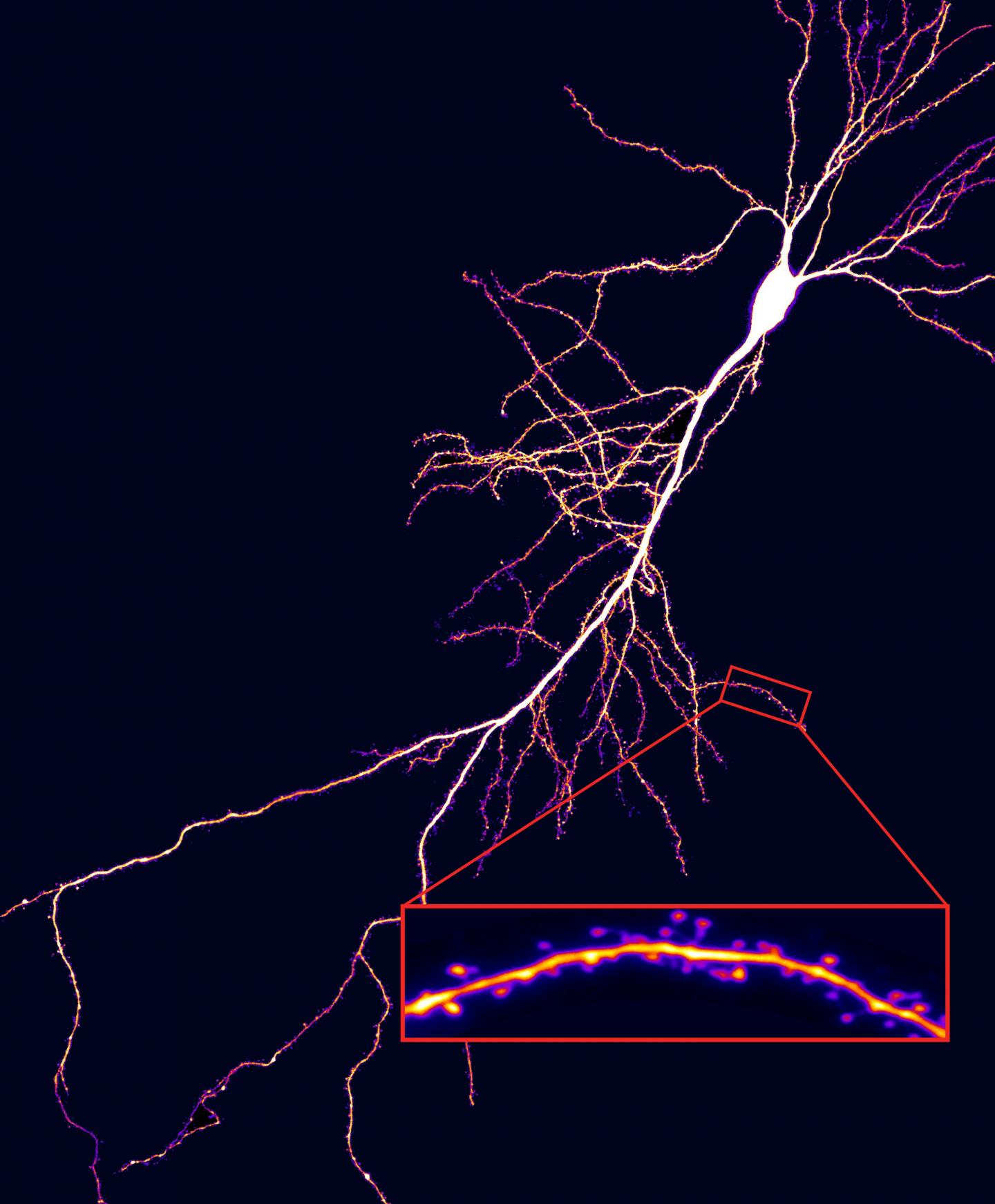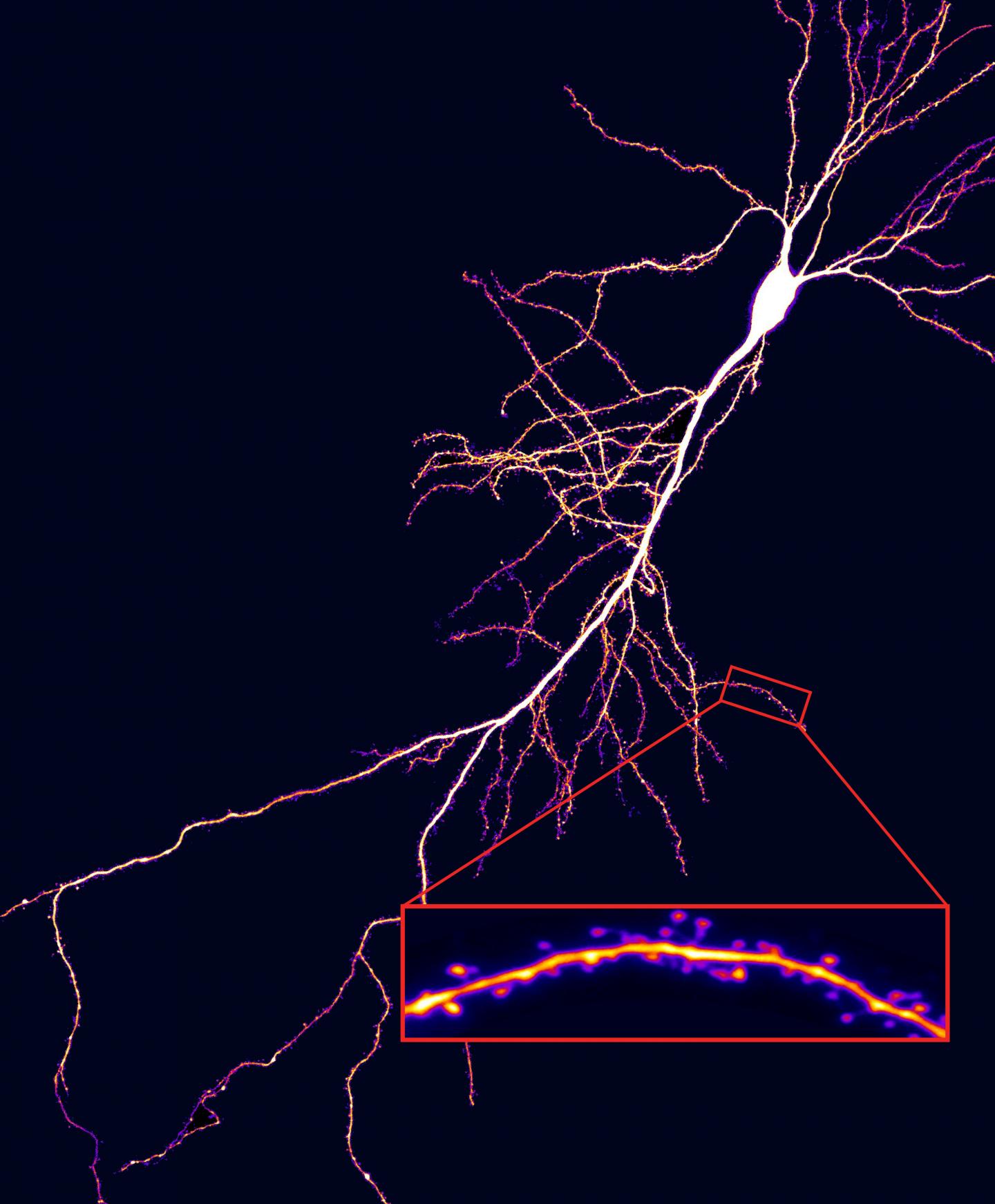
Credit: Anna Hobbiss
The brain's crucial function is to allow organisms to learn and adapt to their surroundings. It does this by literally changing the connections, or synapses, between neurons, strengthening meaningful patterns of neural activity in order to store information. The existence of this process – brain plasticity – has been known for some time.
But actually, there are two different types of brain plasticity at work on synapses. One is "Hebbian plasticity"; it is the one which effectively allows for the recording of information in the synapses, named after pioneering neuroscientist Donald Hebb. The other, more recently discovered, is "homeostatic synaptic plasticity" (HSP), and, like other "homeostatic" processes in the body such as maintaining a constant body temperature, its purpose is to keep things stable. In this case, HSP ensures that the brain doesn't build up too much activity (as is the case in epilepsy) or become too quiet (as can happen when you lose synapses in Alzheimer's Disease).
However, little is known about how these two types of plasticity actually interact in the brain. Now, a team of neuroscientists at the Champalimaud Centre for the Unknown, in Lisbon, Portugal, has begun to unravel the fundamental processes that happen in the synapse when the two mechanisms overlap. Their results were published in the journal iScience.
"In theory, the two types of plasticity act as opposing forces", says Anna Hobbiss, first author of the new study, which was led by Inbal Israely. "Hebbian plasticity reacts to activity at the synapses by inciting them to get stronger while HSP reacts to it by making them weaker. We wanted to understand, on a cellular and molecular level, how the synapse deals with these two forces when they are present at the same time."
In so doing, the authors have surprisingly shown that, contrary to what might be expected, HSP facilitates Hebbian plasticity, and thus influences memory formation and learning. This means that these two types of plasticity "may actually not be such distinct processes, but instead work together at the same synapses", says Israely.
The team's goal was to determine the changes in size of minute structures called dendritic spines, which are the "receiving end" of the synapse. The size of these spines changes to reflect the strength of the synaptic connection.
For this, they studied cells from the mouse hippocampus, a part of the brain which is crucial for learning. In their experiments, they blocked activity in the cells by introducing a potent neurotoxin called tetrodotoxin, thus simulating the loss of input to a certain part of the brain ("think about a person suddenly becoming blind, which leads to loss of input from the eyes to the brain", says Hobbiss).
Forty eight hours later, they mimicked a small recovery of activity at only one synapse by releasing a few molecules of a neurotransmitter called glutamate on single spines of single neurons. This was possible thanks to a very high resolution, state-of-the-art laser technology, called two-photon microscopy, which allowed the scientists to very precisely visualize and target individual dendritic spines.
As this process evolved, the team closely watched what was happening to the spines – and they saw various anatomical changes. First, the silencing of all neural activity made the spines grow in size. "The spines are like little microphones, which, when there is silence, ramp up the 'volume' to try and catch even the faintest noise", Hobbiss explains.
The scientists then activated individual spines with pulses of glutamate and watched them for two hours. One of the things they thought could happen was that the size of the spines would not grow further, since they had already turned up their 'volume' as far is it would go. But the opposite happened: the spines grew even more, with the smaller spines showing the biggest growth.
Finally, the authors also saw growth in neighboring spines, even though the experiment only targeted one spine. "We found that after a lack of activity, other spines in the vicinity also grew, further enhancing the cell's sensitivity to restored neural transmission", says Hobbiss. "The cells become more sensitive, more susceptible to encode information. It is as though the 'gain' has been turned up", she adds.
"The fact that neighboring spines grew together with an active spine signifies that homeostatic plasticity changes one of the hallmark features of information storage, which is that plasticity is limited to the site of information entry", Israely explains. "So, in this sense, the different plasticity mechanisms which are at work in the neuron can cooperate to change which and how many inputs respond to a stimulus. I think this is an exciting finding of our study."
Taken together, these results show that homeostatic plasticity can actually rev up Hebbian plasticity, the type required for storing information. "Our work adds a piece to the puzzle of how the brain performs one of its fundamental tasks: being able to encode information while still keeping a stable level of activity", concludes Hobbiss.
The misregulation of homeostatic plasticity – the stabilizing one – has started to be implicated in human health, specifically neurodevelopmental disorders such as Fragile X syndrome and Rett syndrome as well as neurodegenerative ones such as Alzheimer's Disease. "Perhaps this balance is what allows us to be able to learn new information while retaining stability of that knowledge over a lifetime", says Israely.
###
Media Contact
Maria Joao Soares
[email protected]
http://www.fchampalimaud.org/





